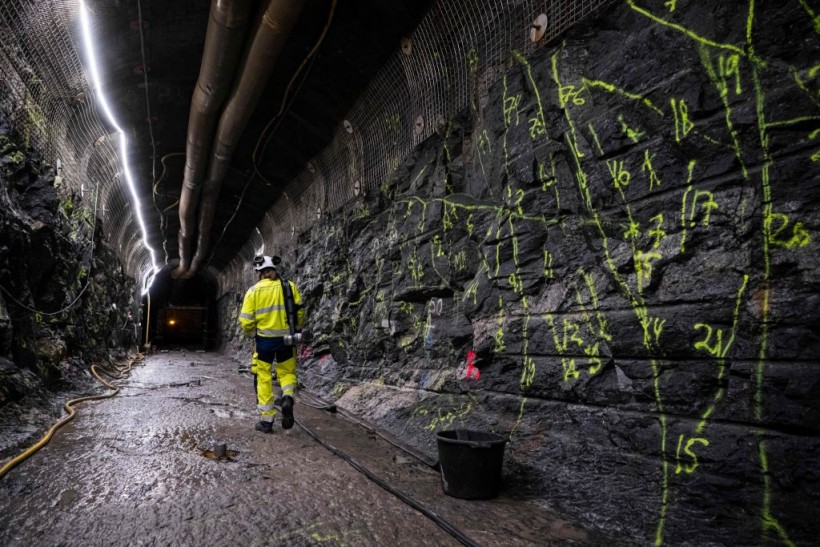Researchers have uncovered a potential game-changer in nuclear waste storage: a novel glass-ceramic composite with promising properties. This innovative material shows potential for enhancing the safety and efficacy of nuclear waste storage methods.

(Photo : JONATHAN NACKSTRAND/AFP via Getty Images)
A worker walks in the Repository in ONKALO, a deep geological disposal underground facility, designed to safely store nuclear waste, on May 2, 2023, on the island of Eurajoki, western Finland.
Enhancing Safety, Efficacy of Nuclear Waste Storage Methods
The University of Saskatchewan researchers are pioneering a breakthrough in nuclear waste storage with the development of a new glass-ceramic composite. This offers the potential for safer and more efficient storage solutions for nuclear waste.
If successful, Interesting Engineering reported that discovery could revolutionize the nuclear industry's approach to managing non-reusable nuclear waste, addressing critical concerns surrounding environmental contamination and long-term storage safety.
Mehrnaz Mikhchian, a University of Saskatchewan PhD student, spearheads this groundbreaking research effort. They aim to identify the most effective containment method for nuclear waste, laying the foundation for enhanced safety and sustainability in nuclear energy production.
Despite its potential as a cleaner energy source, nuclear power faces significant obstacles, notably in waste management. The challenge lies in both preventing environmental contamination from leaching and ensuring the safe disposal of vast quantities of waste generated by nuclear processes.
Amidst global efforts to address nuclear waste management, several countries are exploring the establishment of deep geological repositories as a permanent disposal solution for high-level nuclear waste.
The latest research findings from USask offer a potential breakthrough in this arena. In their recent study, led by Mehrnaz Mikhchian and Professor of Chemistry Andrew Grosvenor, made significant advancements in corrosion resistance and composite material capacity.
Also Read: Radioactive Carbon From Nuclear Tests Detected In Creatures From Mariana Trench
Leveraging the capabilities of the Canadian Light Source, Tech Xplore reported that their investigation into a novel glass-ceramic composite material yielded promising outcomes. Previously, uncertainties persisted regarding the long-term effects of corrosion on these materials.
However, the team's findings now provide invaluable insights into the durability and performance of these composite materials over extended periods, offering a potential game-changer in nuclear waste management strategies.
Mikhchian emphasized the importance of preventing environmental contamination from nuclear waste. Their study, aimed at assessing material corrosion when exposed to water for a year, yielded positive results, with the material demonstrating resilience.
Addressing Key Challenges
Utilizing the VLS-PGM beamline at CLS and another beamline at the Advanced Photon Source, the research team analyzed corrosion data from various studies. They found that the composite material, the most commonly used glass, displayed excellent resistance to corrosion.
The new material offers a promising solution for nuclear waste storage, addressing key challenges such as environmental concerns and the need to accommodate large waste volumes. Unlike conventional glass, this material can contain more waste, enhancing its suitability for nuclear waste storage.
As published in Science Direct, Grosvenor highlights the broader implications of these findings, asserting that they pave the way for advancements in nuclear power adoption and the development of new reactor technologies.
Related Article: Nuclear Waste to Power Hi-tech Reactor Upto 1.5MW?! High Five for the Environment!









